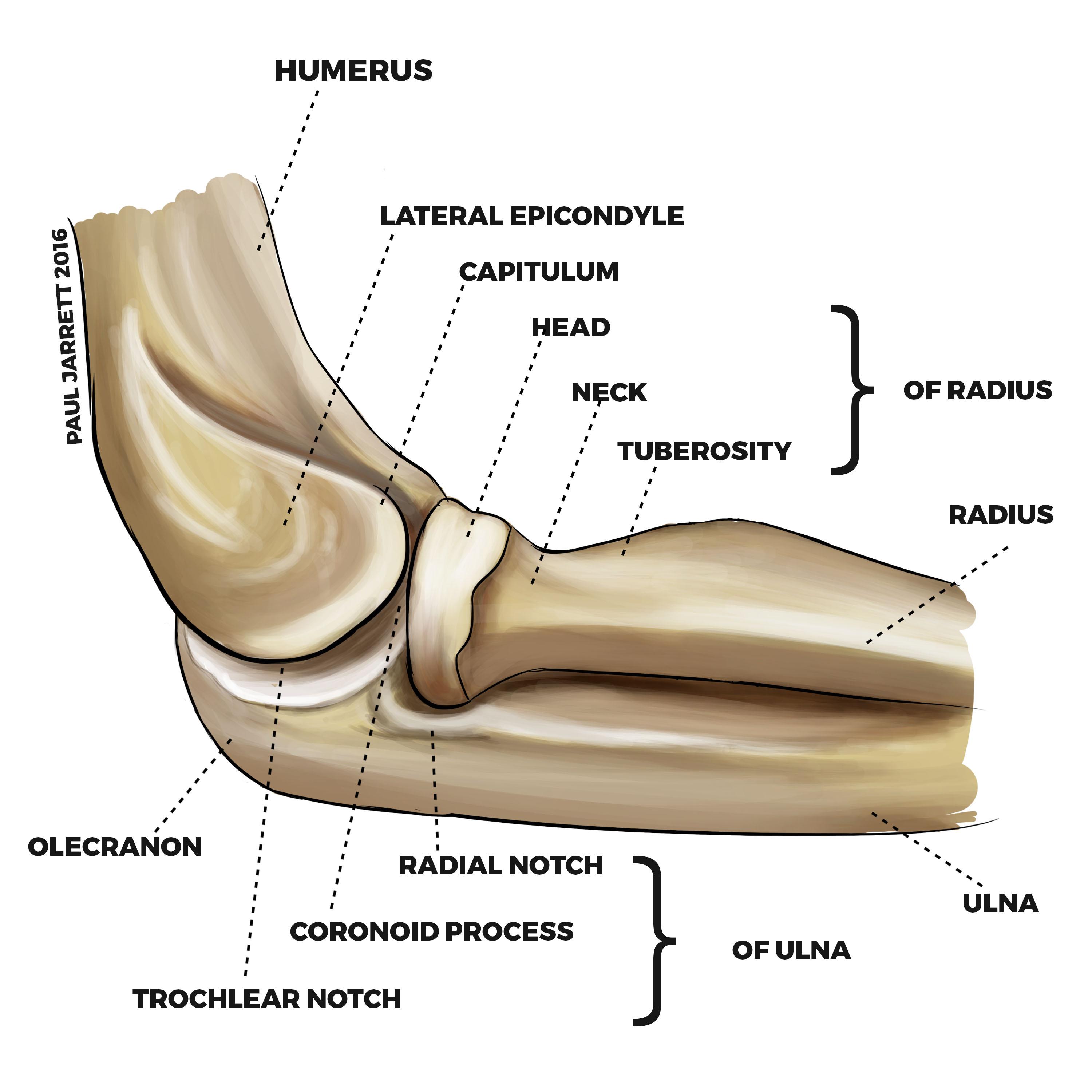Elbow Anatomy

Overview
The elbow is a prevalent body joint composed of three main bones, and it plays an essential role in arm movement. It connects three bones, namely the humerus in the upper arm and the radius and ulna in the forearm, forming a hinge joint. Understanding the anatomy of the elbow can assist in recognising several conditions affecting this area.
Types
Indeed, the anatomy of the elbow consists of various types based on the parts involved and the functions:
1. Bones: The elbow’s primary structure comprises the humerus, ulna, and radius bones.
2. Joints: The elbow has three different joints, including the humeroulnar, humeroradial, and proximal radioulnar joints.
3. Ligaments: Ligaments like the Medial Collateral Ligament (MCL), Lateral Collateral Ligament (LCL), and Annular ligament help stabilize the elbow.
4. Muscles: Various muscles surrounding the elbow enable it to perform diverse movements.
5. Nerves: The primary nerves that pass through the elbow include the radial, ulnar, and median nerves.
Causes
Several factors can affect the elbow, leading to issues that might be painful or limit movement. The main causes include physical injury, repetitive motion, certain autoimmune diseases such as rheumatoid arthritis, infections, and tumours. Elbow conditions are also common in people engaged in sports or physical activities that involve repetitive elbow motions.
Symptoms
The symptoms of elbow issues depend on the precise cause, but generally might include:
1. Persistent or recurrent pain around the elbow.
2. Limited range of motion.
3. Swelling.
4. Redness or warmth around the elbow.
5. Numbness or weakness in the arm.
6. Any deformity around the elbow.
Diagnosis
Diagnosis of elbow issues usually involves a physical examination, where a healthcare provider assesses any pain or tenderness, swelling, and restricted movement. Additional tests such as X-rays, MRI scans, CT scans, nerve conduction studies, and blood tests may be needed to identify the underlying problem conclusively.
Treatment Options
Displaying the wide variety of treatments, the options can range from non-invasive (conservative) methods to surgical procedures. They typically include:
1. Rest: For minor issues, resting the affected elbow can often help alleviate symptoms.
2. Medication: Pain relievers, topical creams, and sometimes corticosteroid injections can help manage the pain.
3. Physical therapy: Consists of exercises and stretches to improve strength and flexibility.
4. Surgery: In severe cases that don’t respond to conservative treatment options, surgery might be recommended.
Living With Elbow Anatomy
Practical strategies for managing elbow issues centre around maintaining a healthy lifestyle and precautionary measures during physical activities. This can include maintaining a healthy weight, engaging in regular but sensible exercise, using ergonomic equipment at work, and taking regular breaks to rest the elbow, especially in jobs that involve repetitive movements.
When to Seek Help
You should seek immediate medical attention if you experience severe or persistent elbow pain, inability to use the arm, an exposed bone or tendon, any sign of infection like fever or redness, or if your elbow looks deformed. Prompt treatment can often prevent complications and help preserve function in the affected elbow.
